
In this lesson from Art Hub for Kids, students are shown how to draw a Russian Nesting Doll.
- Subject:
- Arts Education
- Visual Arts
- Material Type:
- Activity/Lab
- Date Added:
- 12/07/2020

In this lesson from Art Hub for Kids, students are shown how to draw a Russian Nesting Doll.
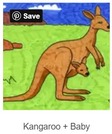
Here's an easy "How to Draw a Kangaroo" tutorial.

Note: This lesson was designed for students with autism. The students will review a few elements of art, specifically colors, shapes, and different types of lines. They will identify these elements in Vincent van Gogh's painting Irises. The students will then practice drawing different types of lines and shapes in different colors, and will use these elements of art to produce an original crayon-resist piece inspired by Irises.

Students study how Dorothea Lange tells stories related to children. They practice telling their own written and visual stories in response to Lange's images.
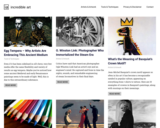
This site is easy to use, has tons of ideas, and breaks art ideas up by grade, art period, medium, artist, subject, and (what I love the most) integration. If you click on the Integration tab, there are numerous ideas on how to bring art into all your other subject areas. The ideas are endless!
*NOTE: Currently this site appears to be under construction for updates.
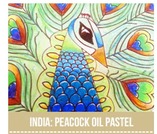
View this resource to find three AMAZING India-inspired art projects for kids!

Information about various Indigenous artists and art styles in Canada.
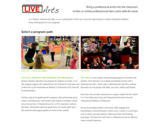
LIVE (Live Interactive Video Education) Arts Education is a dynamic distance education arts program for students in Grades 1 to 9. The program supports the Saskatchewan Arts Education curriculum and is delivered via the Saskatchewan Ministry of Education LIVE Network (CommunityNet).
Teachers sign up for grade specific programs then professional Artists connect simultaneously with teachers and students in multiple schools across the province of Saskatchewan for a LIVE experience with Arts Education.
Information about the grade level, arts strand, guest artist, date and time and program guides are listed on this website.
This program started out in 2005 as an Artist in the School distance education pilot program hosted by Regina Catholic Schools. Initially the broadcast programming was delivered by Mixed Media Artist in Residence Heather Cline from a special distance education broadcast classroom at St. Peter School in Regina. The program has continued to expand and evolve responding to the needs of Saskatchewan Teachers and the new Saskatchewan Arts Curriculum.
Last year the LIVE Arts program, in partnership with several Saskatchewan School Divisions, broadcast 36 programs featuring Professional Artists in the areas of Visual Arts, Drama, Music and Dance. Each program featured a Guest Artist working with a classroom teacher and their students. Teachers and students participating via distance technology followed along with the help of a guide that outlined the broadcast portion of the program and provided teachers with a follow-up hands-on activity.
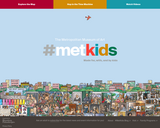
This resource is recommended for kids ages 5 and up. An extensive catalog of content, as well as a tool to partake in a virtual tour of the museum, will give kids a dose of art and culture. Kids can learn about a particular period or collection and explore art via the “Time Machine,” starting as early as 8000-2000 BC to present time with fun facts and videos.

In this activity, students each create different tiny art works that are all put together into a class mobile. This project would be an excellent opportunity for students to use and practice the elements of art.

This comprehensive site offers art lessons and activities at a wide range of levels:
- PreK-K
- Grades 1-2
- Grades 3-5
- Grades 6-8
- Grades 9-12
- College/University
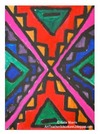
This activity is "based on painted houses in South Africa created by the Ndebele tribe." The designs on the houses are painted by women in the tribe and usually feature geometric shapes, bright colors, and symmetrical designs.

Part of Google Arts & Culture, allowing students to explore iconic locations in 3D.

Explore the many forms of visual art, from basket weaving to painting, and glasswork to furniture, with resources that encourage analysis, research, and practice. Preschoolers can practice their colors and discover how colors change when mixed with a lesson from the Abracadabra series. Middle and high school students can design self-logos and write descriptions of them after watching "The Art of Logo Design" from Off Book. The Math + Arts collection provides cross-curricular lessons that combine math with visual arts topics such as Shapes & Patterns, Perspective Drawing, and Totem Poles. Filmmaking, photography, and architecture, in addition to careers in art, the history of visual arts, and art institution, are all also explored.
Explore the videos, interactive lessons, interactives, lesson plans, galleries, audio files, images, documents, webpages and collections. Lots to offer!
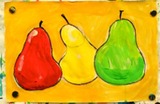
This website provides step-by-step instructions for creating a Painted Pears Still Life project.

This lesson focuses on a family depicted in a work of art. Students practice using vocabulary related to people and families. Activities emphasize oral and written descriptions of the people portrayed in the work of art, using possessive adjectives. Students are challenged to infer what the relationships are between figures depicted and what individuals are doing, based on such clues as their pose.

This lesson focuses on people at work depicted in a work of art. Students practice using vocabulary related to people and work. Activities emphasize oral and written descriptions of the people portrayed in the work of art, using job-related vocabulary and adjectives to describe feelings. Students are challenged to infer what job individuals are doing, based on such clues as their pose.

This lesson focuses on different exterior spaces depicted in works of art. Students practice using vocabulary associated with the weather and how people react to the sea. Activities in this section teach students about some of the elements of art (color and line), adjectives, and two kinds of sentences (declarative and imperative).

Students will discuss works of art that have grotesque elements and symmetry in their design. They will identify symmetry and line in grotesques. Students will create symmetrical designs for a pilgrim bottle and also design a door panel using grotesques. They will then analyze William Blake's poem "The Tiger" and write their own grotesque-inspired poetry.

Students will discuss the sculpture "Python Killing a Gnu" by Antoine-Louis Barye. They will use their imagination to visualize a setting for the python depicted in sculpture. Then they will describe their setting, sculpt a clay snake, and create their setting using mixed media.